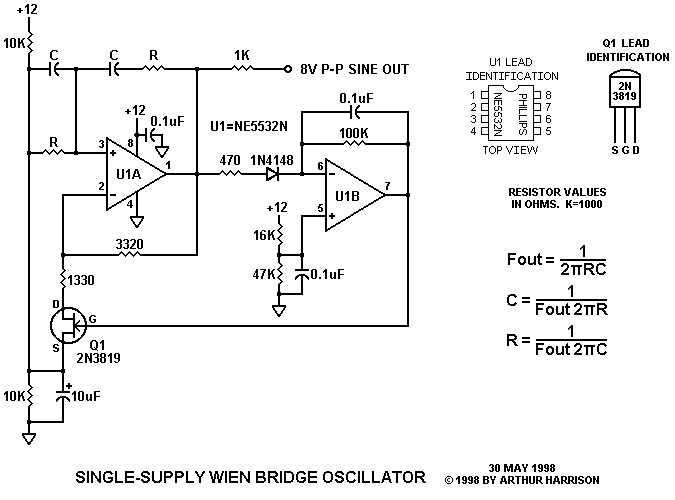 |
SINGLE-SUPPLY WIEN BRIDGE OSCILLATOR
Operational amplifier U1A, in conjunction with the parallel and series RC legs, form a frequency determining network, while U1B, Field Effect Transistor (FET) Q1, and associated components form an amplitude regulating circuit that prevents the output waveform from saturating. The 0.1 microfarad capacitor and 100K ohm resistor in U1B's feedback path are selected for an appropriate amplitude regulation time constant, based on the oscillator's frequency. As shown, the circuit will work well for values of C=100pF and R=20Kohm, producing an output frequency of about 80KHz.
FET parameters may vary considerably, so a voltage measurement should be made between the FET's source and gate terminals to ensure that the gate is biased negative with respect to the source. If the FET gate is positive with respect to the source, adjustment of the 1330 ohm or 3320 ohm resistor values, or a different FET, is indicated.
A historic implementation of the Wien bridge oscillator, in which filament lamps are used for the amplitude regulating element, was described by William Hewlett at Stanford University in 1939. Hewlett's oscillator proved a significant contribution to modern electronics laboratory equipment, and also launched his company, Hewlett-Packard.
 |
May 30, 1998
Text and images ©1998 by Arthur Harrison
Back to the Opening Page of Art's Theremin Page